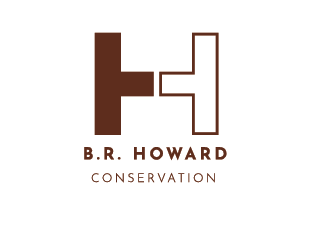How to write an RFP
What is an RFP?
An RFP is a Request for Proposal. RFPs include detailed information about an upcoming project and invite qualified individuals or vendors to submit their ideas for how to fulfill those needs. RFPs are common among many industries, including public art projects as well as historical sites, and other artifact and cultural heritage organizations. If you are writing an RFP, check out our free checklist for writing an RFP or if you’re not quite ready to start writing you can begin the planning process with our free RFP planning worksheet.
What can I write an RFP for?
RFPs can be written for nearly any type of industry and project including new
Site specific projects
Installations for a seasonal event
Permanent additions to a collection for a community
Conservation of artifacts
Transportation of collections
...and more!
RFPs contain a variety of information including budget, project description, deadlines and more.
What should I include in an RFP?
Deadline
When will your RFP be due? Make sure you give an adequate amount of time for someone to find the RFP, prepare a proposal, and submit it to you. It is suggested to provide at minimum 2-3 weeks from the time you make your RFP public until the deadline. 4-6 weeks is appreciated among artists and vendors.
Budget
Will you have a budget range or a fixed cost amount? Will you provide stipends to your artist finalists? Who is responsible for paying to have the piece installed and manufactured? These concerns will need to be included in your RFP to help potential applicants.
Eligibility
Are you accepting proposals from vendors only within your state, or anywhere in the country? Do you require a certain amount of past experience? There are a variety of factors that you may want to list in your RFP.
About your organization
Giving your potential applicants a good understanding of what your organization is and what you’re about will help them in developing their proposals. Your goals, values, and mission will all be taken into account.
Photos/maps/measurements
If your project is site specific, including maps, measurements, and photos of the area are appreciated among artists. If your RFP is for conservation or transporting of collections, including photos of these objects is suggested to help ensure clear communication with vendors.
Project description
This is where you can get into the nitty gritty of the project at hand. Here, you can lay out expectations, needs, goals, and any information that you feel is crucial for potential applicants to know about your project. Being as detailed as possible allows for open communication and ensures vendors understand your needs.
Selection process
Including information about what the proposals will be ranked by is helpful for vendors to also know if they are qualified and what they should expect from the selection process.
Timeline
Including specific dates like deadline, first round, second round, interviews, in person meetings, selection date, etc. helps both the applicants understand your vision for the project and also helps to keep you on track.
Submission requirements
Will you accept emailed PDFs or do you want applicants to submit printed versions of their proposals?
Contact information
If someone has questions about your RFP, who should they contact? You’ll need to designate a specific person to manage all questions and communications with potential vendors and artists.
About the artist
Will you require resumes, case studies, references, statement of work, and mock ups from artists? Provide a list of what you’d like to receive about the artist and/or vendors.
Other considerations
Within your RFP, will you ask for information regarding plans for installation and conservation and maintenance planning? Planning for these up front will help ensure the longevity of your new artwork.
How to promote an RFP
You’ll want to compile all of your information into a PDF document. You can use Word or have your Creative Team design it to match your brand. You can use this PDF and information to submit your RFP to sites like CODAworx.com to help promote your call for artists, architects, conservators, and others. You can also add your RFP to your website, post about it on social media, and include it in your newsletter. Depending on your organization, you may be able to submit your RFP to FedBizOpps.gov.
Your biggest concern should be making sure your RFP gets in front of the right people. Simply put, if you don’t get your RFP in front of the people you’re trying to reach, you won’t get quality responses to your RFP. If you are looking for an artist, you clearly want to reach as many artists as possibly can. The best way to get your RFP in front of the right crowd is to utilize platforms that they use and are popular in their industry. One RFP distribution method that is growing and is known in the artist and designer industry is CODAworx.com. A few great aspects about CODAworx is that there is a wide range of people using the program. Anyone from installers, to photographers, engineering, video, conservation, artists and beyond. Most organizations that post RFPs can receive 50, 100, 150+ responses! Plus, if you need an extra hand, they can provide consulting for guiding you through the process and even writing your RFP.
Choosing an RFP candidate
Once you have your RFP responses, you’ll want to make sure you have a process set up to evaluate your candidates. In another article, we’ve outlined an example of what to consider when choosing a conservator.
free RFP writing checklist
Ready to write your RFP? Download a free RFP checklist to make sure you don’t forget these important sections!
free RFP Planning worksheet
Not quite ready to write your RFP, but want to start planning for it? Get this worksheet to start preparing for your RFP writing process.



